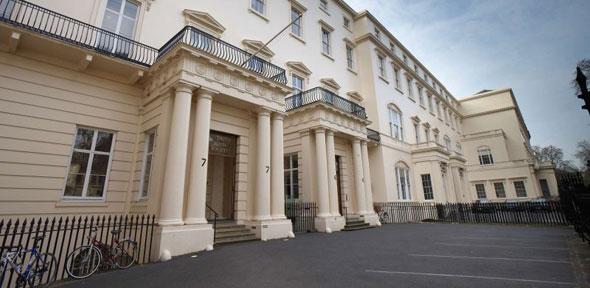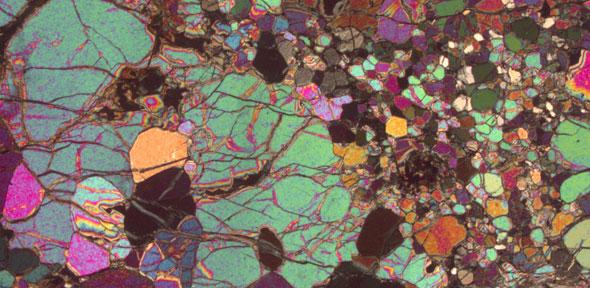
Last week the government announced an initiative to commemorate the First World War with a programme of cultural events called 14-18 NOW. Through Arts Council England, it will fund commissions by leading artists from Britain and around the world “to create works that reflect on the impact and legacy of the First World War”.
Art has long been at the mercy of politics. Research by art historian and broadcaster Dr James Fox reveals that a century ago the present government’s predecessor in the shape of Asquith’s wartime cabinet was convinced that art posed such a threat to the security of the nation that it made painting out of doors illegal around the country.
Fox, a Research Fellow at Gonville & Caius College and known to public audiences for his BBC documentaries, first came across the subject while researching his PhD about art and the First World War. He explained: “I kept finding strange passages in which artists confessed to being abused, interrogated and arrested while painting and sketching outdoors. Virtually nothing had been written about the reason for these bizarre experiences, so I set about trawling newspapers, government reports and police records in search of clues. What I discovered was astonishing.”
Fox’s findings were first published in the British Art Journal in 2009. A more extensive discussion of the same topic will form a chapter in his forthcoming book, Business unusual: British art and the First World War, 1914-1924.
With the outbreak of the First World War, the British people – who had only recently become obsessed with spy novels and films – grew paranoid that undercover German agents were infiltrating the nation. “The public became suspicious of almost everyone who didn’t fit in. Of the many groups who suffered from these suspicions, some of the most adversely affected were artists,” said Fox.
The notion that artists might be spies drew some of its credence from none other than Robert Baden-Powell, founder of the scouting movement. Fox said: “In his book My Adventures as a Spy, Baden-Powell revealed how he and other British spies on the continent had posed as artists and disguised their plans of forts, harbours and industrial areas as innocent sketches of stained glass windows or ivy leaves.
This was one of the reasons why, with the declaration of war in August 1914, artists quickly fell foul of emergency legislation. The Defence of the Realm Act (DORA) imposed a regime of draconian censorship on artworks. It also made it illegal to make “any photograph, sketch, plan, model, or other representation of any naval or military work, or of any dock or harbour, or with the intent to assist the enemy, of any other place or thing”.
The effects were significant. As one artist explained: “No sketching whatever is allowed within four, and in some cases, seven miles of the coast... Even though the subject of the sketch may be a group of trees, a cathedral or a paintable cottage, the rule applies strictly.”
As a result of the legislation, many artists were challenged or arrested: in Scotland the society painter and Royal Academician John Lavery was arrested for painting the Fleet at the Forth Bridge; in Dover the renowned landscape painter Philip Wilson Steer was accosted by “some blighter [who] comes up and wants to see my permit which is very upsetting in the middle of laying a wash”. Reporting from the west coast of Ireland, the post-impressionist Augustus John poked fun at the nation’s panic with the account that “around the harbour… if one starts sketching one is at once shot by a policeman”.
Those most severely hit by the restrictions imposed on painting included the artistic communities based in Cornwall, a county where fears about German invasion were strongest. Artists in the clusters at  Newlyn, St Ives and Lamorna felt the restrictions keenly at a time when wartime austerity was already depressing art sales. In Newlyn, the figurative painter Laura Knight wrote that “even to write a perfectly straight line might be interpreted as a sinister act”. In Lamorna, Alfred Munnings (famous for his paintings of horses) remarked that he “dared not be sketching out of doors in the country at all”.
Newlyn, St Ives and Lamorna felt the restrictions keenly at a time when wartime austerity was already depressing art sales. In Newlyn, the figurative painter Laura Knight wrote that “even to write a perfectly straight line might be interpreted as a sinister act”. In Lamorna, Alfred Munnings (famous for his paintings of horses) remarked that he “dared not be sketching out of doors in the country at all”.
Fox said: “As the war progressed, art itself began to be perceived in an increasingly negative light, downgraded from merely pointless or unnecessary activity to one that was improper and immoral, encouraging selfish and profligate behaviour when selfless sacrifice was what counted. Artists were bracketed together with other alien identities – Jews, pacifists, profiteers, foreigners, newly naturalised Britons.”
Bohemianism itself signalled a lack of patriotism. When a British artist-couple rented a cottage in the West Country, there were immediate suspicions that they were German agents. The villagers’ vendetta against them prompted the police to call one of the artists in for questioning. He was soon released. The local schoolmistress exclaimed: “If he is not a spy, why does he wear a hat like that?” In London the sculptor Jacob Epstein, with his modernist work and German name, found his studio ransacked.
Fox’s research reveals that in the first month of the war, some 9,000 cases of espionage were reported, yet during the four years of the conflict just 29 spies were convicted. “Hundreds of artists were arrested and questioned, an experience that must have been deeply distressing. But only one of them was found guilty. The Norwegian painter, Alfred Hagn, was sentenced to death after invisible ink was discovered in his hotel room in London, but was extradited after going on hunger strike,” said Fox.
The case that made the biggest impression on the public was that of Philip de László, a famous society portraitist who was Hungarian by birth. His naturalisation as a British subject in 1914, and his easy access to the powerful elite, put him under suspicion. The patriotic newspaper John Bull wrote: “The distinguished character of M. de László’s clientele would have afforded him fine opportunities for obtaining first-class information if he had really been desirous of getting it… Cabinet Ministers… are such busy people that they frequently go on working while the artist plies his brush… King George… walks about the room and dictates to his Secretaries while he is “sitting” for his portrait.”
De László was arrested and interned. He was condemned in the press for being one of “the most dangerous spies” of the war, and many called for him to be executed. “After several years imprisoned without charge, De László, rightly, was exonerated. But it had a huge effect on his career, and it took a long time for him to recover,” said Fox.
The treatment of artists during the First World War seems, with the benefit of hindsight, laughable. Indeed, the notion of middle aged artists being arrested by over-jealous officials while painting pretty watercolours out in the countryside was lampooned in the press at the time. But Fox reminds us that things are not so different today.
“In recent years the government’s attempts to combat terrorism has led to new legislation that authorised police officers to stop and search anyone who appears to be photographing or filming sensitive locations. The medium might have changed, but the principle is the same. We remain innately suspicious of images”, he said.
During the First World War artists were widely believed to be spies and, around much of the country, painting became illegal. Research by art historian and broadcaster Dr James Fox reveals how deeply artists were affected, not just by the government’s ban but also by a surge of public paranoia.
This work is licensed under a Creative Commons Licence. If you use this content on your site please link back to this page.


















![Libération de Paris by I. Blanchot, [1945]. Illustrations by Pierre Albert Leroux.](http://www.cam.ac.uk/sites/www.cam.ac.uk/files/styles/slideshow/public/aout_1944_small.jpg?itok=-pRw-8T1)

![Les volontaires du général Larafale by Marguerite Chabay, [1945].](http://www.cam.ac.uk/sites/www.cam.ac.uk/files/styles/slideshow/public/chabay_volontiers_cover_small.jpg?itok=E5P90vDw)


![Gala au profit des architectes prisonniers et déportés, [1945]. Lithograph by Valentine Hugo.](http://www.cam.ac.uk/sites/www.cam.ac.uk/files/styles/slideshow/public/gala_au_profit_small.jpg?itok=xfdFNqXf)

![Le chant de la libération: le chant des partisans by Anna Marly with words by Maurice Druon and Joseph Kessel, [1945]. Sheet music cover.](http://www.cam.ac.uk/sites/www.cam.ac.uk/files/styles/slideshow/public/le_chant_de_la_liberation_small.jpg?itok=PIcYoeKi)
![Livre noir, 1939-1945 by Jean-Louis Chancel, [1945]. ‘Le chemin de croix’, from the set of 30 plates by the author.](http://www.cam.ac.uk/sites/www.cam.ac.uk/files/styles/slideshow/public/livre_noir_swastika_small.jpg?itok=MKMZATR3)
![Paris délivré par son peuple, [1944]. Cover by Pierre Boucher.](http://www.cam.ac.uk/sites/www.cam.ac.uk/files/styles/slideshow/public/paris_delivre_small.jpg?itok=rjMC1FpL)






 1920s, demand all of a sudden dried up for most foodstuffs, while Europe imposed quotas and embargoes and Argentina and Australia swamped the markets with their exports. Another record grain crop in 1931 was harvested with little hope for its resale, domestically or as export. The price of Chicago wheat fell hard and fast from $1.40 per bushel in July 1929 to 49 cents – a fall in value of about two-thirds in just two years.
1920s, demand all of a sudden dried up for most foodstuffs, while Europe imposed quotas and embargoes and Argentina and Australia swamped the markets with their exports. Another record grain crop in 1931 was harvested with little hope for its resale, domestically or as export. The price of Chicago wheat fell hard and fast from $1.40 per bushel in July 1929 to 49 cents – a fall in value of about two-thirds in just two years. 











